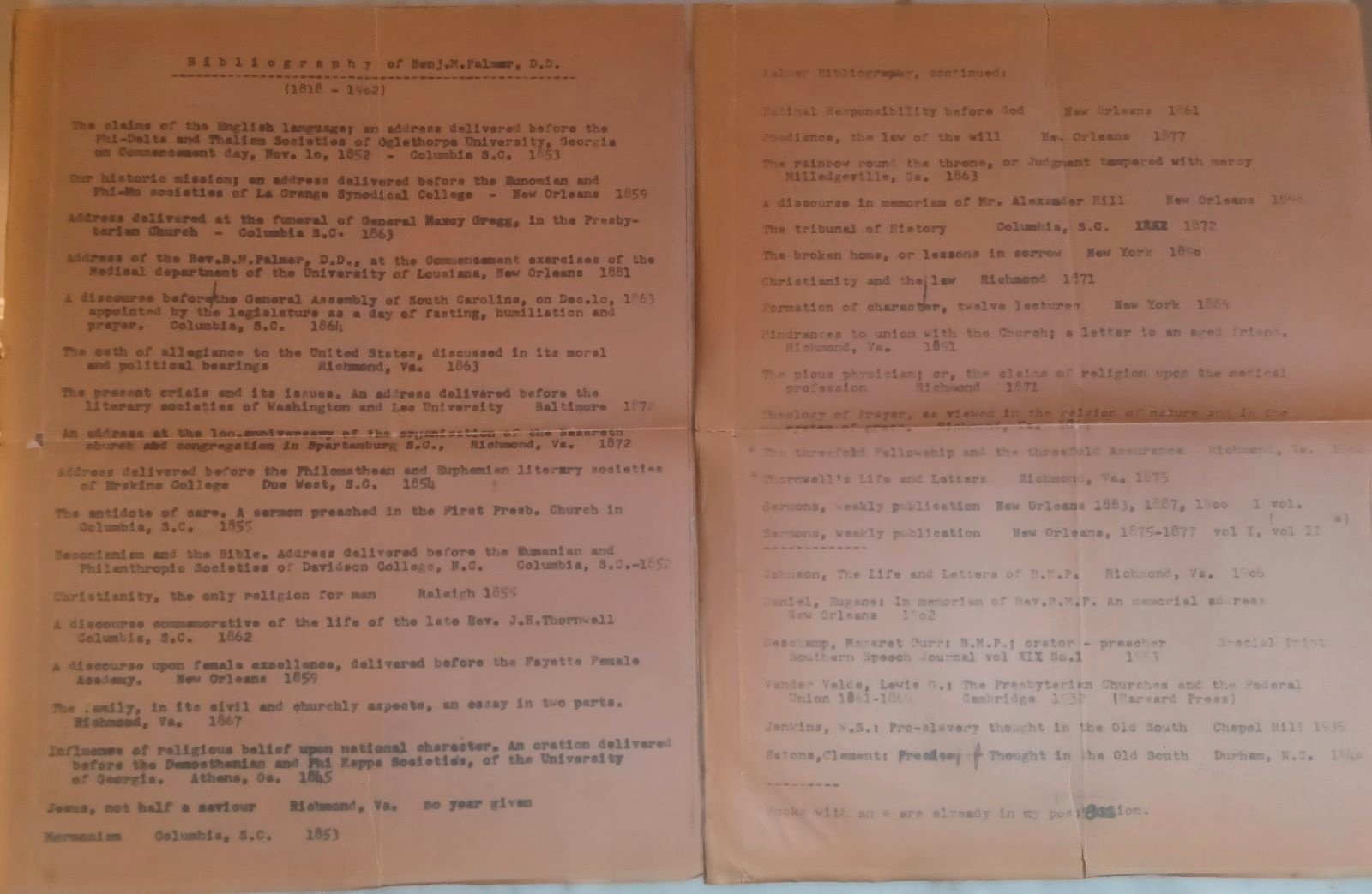Receive our blog posts in your email by filling out the form at the bottom of this page.
One particular enjoyable aspect of perusing old books is noting their provenance — that is, the history of where the book came from. Or, who owned this book and from whose library? Many of the books found in the Log College Press digital library were scanned at the Princeton Theological Seminary library (to name but one) and arrived there by way of someone who bequeathed the book to Princeton. Many books were once owned, for instance, by B.B. Warfield, Louis F. Benson, Samuel Miller or William H. Green (which often bear their handwritten names or personalized book plate labels). These markings help to tell a story that is bigger than the book itself.
Recently, this writer acquired some books with especially interesting provenances. One such book is Thornwell’s Life and Writings (1875) by Benjamin M. Palmer. This copy comes from the library of William Childs Robinson, bears his name and handwritten notes, and includes an undated typewritten bibliography of the works of B.M. Palmer produced by Robinson himself. The list also notes which volumes were owned by Robinson.
One can picture Robinson — who says of himself that “I have lived in the shadow of Columbia Theological Seminary” (In Response to Recognition by the Alumni (1967)), where he studied and taught church history — sitting in front of his typewriter, working to develop this list and carefully recording with an asterisk those Palmer works which he owned in his library.
Bibliography of B.M. Palmer by William C. Robinson (undated, photo credit: R. Andrew Myers).
An inscription in this copy of Palmer’s biography of Thornwell informs us that it was given to him by his father, David, on October 18, 1919. Clearly, it was read with care. Thornwell’s Life and Letters by Palmer is referenced many times in Robinson’s 1931 study of Columbia Theological Seminary and the Southern Presbyterian Church.
Paul Settle, a student Robinson, drew a line from Thornwell to Palmer to Robinson in a “heartfelt tribute to his teacher.”
He was one of the last in a line of Southern Presbyterian worthies, extending from Thornwell, Dabney, Palmer, Girardeau, and others, to the present, who proclaimed and lived the whole counsel of God (quoted in David B. Calhoun, Pleading For a Reformation Vision: The Life and Selected Writings of William Childs Robinson (1897-1982) [2013], p. 125).
Another line can be drawn from Palmer’s biography of Thornwell to Robinson’s The Reformation: A Rediscovery of Grace (1962). Among the notations and underlining found in Robinson’s copy is this from p. 81: “…the doctrines of the Reformation, which are only the doctrines of grace…” And on p. 8 of Robinson’s The Reformation, we read: “On account of its rediscovery of the doctrines of grace, the Reformation has been hailed as a revival of Augustinianism.” Certainly, the concept that the Reformation was largely about the doctrines of grace is not unique to these authors, but it was crucially important in their understanding of the history and theology of their spiritual forefathers. And so it is to us. There are lines that connect truth between generations, and that is what today’s story is about.


